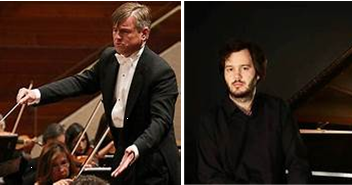In the second concert of the new season, ADDA Simfónica under their artistic director Joep Vicent last night offered a mix of perhaps overstated bravura interspersed with one of music’s great understatements. At the start, I will say that no longer is it necessary to describe this orchestra, conductor or venue in glowing terms. Everyone in last night's audience, ADDA regulars, knows that this is now amongst the finest orchestras in the world, and that the ADDA venue approaches perfection in terms of view and acoustics. The orchestra has by now set off on a tour of Japan. Success brings the pressures of demands, but the ADDA project has become a resounding success for all concerned.
Last night’s program opened with Rimsky-Korsakov’s Capriccio Espagnole. It made a popular start to a concert that did rather concentrate on well-known favourites. But these pieces are well known and favourite because, in the right hands, they continue to deliver unforgettable experiences and this version of Capriccio Espagnole did deliver. I still find Rimsky-Korsakv’s orchestration rather heavy, however.
Then there followed the evening’s understatement. If one is trying to make a noise, then the last instrument to choose is a guitar, which is almost impossible to play forté. The beauty of good writing for the instrument, however, lies in its ability to be totally personal, apparently to make public the player’s inner most thoughts.
Rodrigo’s Concierto de Aranjuez is the best known of all guitar concertos. Its fame is often as a result of the separation of the slow movement as a lollipop to sweeten an audience. The practice is mistaken, however, because by itself it can be played mournfully, making it a sad piece of music designed to make everyone in the audience sadder. In its rightful place, between two brightly lit neoclassical allegros, the slow movement becomes merely a time to reflect. Whereas the outer movements present a sunlit landscape, the central movement describes the exact same landscape at twilight. Everything is softer, cooler, gentler, but it is never mournful. The Japanese soloist, Kaori Muraji, who performed last night and will accompany ADDA on the tour of Japan, was clearly enjoying every moment. Rodrigo’s brilliant and sympathetic orchestration never drowns the guitar’s small voice and overall creates a spectacular tense excitement that is never lost. Superb: superb writing, a superb work, superbly performed.
Kaori Muraji offered an encore of one of her own pieces, inspired, she told the audience, by old Japanese temples. The audience heard, I would suggest, especially in the right hand, something that reminded them of more nearby historical sites.
The second half opened with another popular favourite. Tchaikovsky suite from Swan Lake has some of the most familiar tunes in the repertoire. What is often ignored, is how spectacular is the orchestration which, of course, the ADDA orchestra made crystal clear and exciting.
Our evening came to a
close with a selection from Khachaturian’s Spartacus. If what had gone before
was not sufficiently melodic or rhythmically arresting, then this selection
from Khachaturian’s ballet was a perfect was the perfect solution. The grand, Romantic
string theme, at least for British ears, remains associated with sailing ships
on a Sunday evening, and the viciously rhythmic sections almost bit the ears. And
this superb playing of the ADDA orchestra was offered twice, as they repeated
the upbeat section as an encore.















.jpeg)






